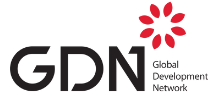
The 2016 OECD Development Co-operation Report convincingly claims that sustainable development cannot be achieved with public funds alone. New engagements between public and private stakeholders need to be established to meet and embolden the development agenda, the report says.
The implications for such partnerships go well beyond fundraising and finance. Their challenge is compounded by the ambitious global framework set out by the Sustainable Development Goals (SDGs), which prioritize inclusion at all levels under the ethos of "leaving no one behind." To holistically respond to the complexities of these targets, both private and public sector actors will need to prioritze experimentation, research and diversification of development finance approaches in the decade ahead.
In partnership with the OECD DAC, GDN organized a two-hour session at the OECD Conference Centre, Paris to discuss some of these challenges, exploring two contrasting – yet complementary – ideas for “blended finance” as an engine of development: large-scale, centralized vertical innovation applied to health systems; and promoting sustainable incentives for social enterprises through decentralized innovation. Winners of GDN's Next Horizons Essay Contest, a global competition for ideas on the future of development assistance run in 2014-15, presented their ideas from their essays on health systems and social enterprises.
GDN's Next Horizon Essay Competition on the Future of Development Aid was organized in 2014-15, with the support of the Bill and Melinda Gates Foundation.
